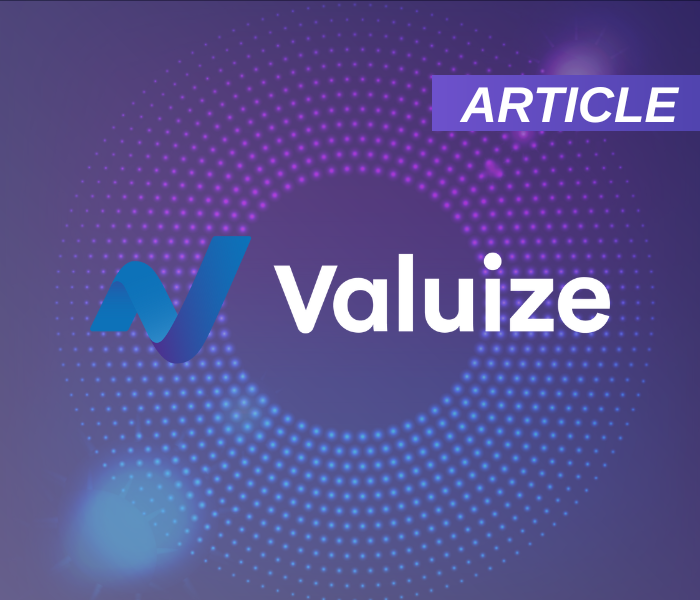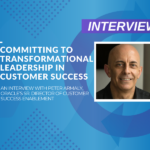The digital world of B2B SaaS is evolving, and with it, the expectations on software providers. Relying on hefty upfront fees without demonstrating product value is quickly fading. Now, buyers are looking for pricing models that closely tie vendor success to customer success. Enter outcome-based pricing—a model that’s generating buzz and sparking debate.
Outcome-based pricing flips the script on traditional subscription models by aligning costs with the tangible value customers receive. For B2B SaaS companies, this means charging based on measurable outcomes—such as increased revenue, cost savings, or operational efficiencies. This customer-centric approach nurtures long-term partnerships, fostering trust and collaboration.
At Valuize, we’ve long championed outcome-based selling and advocating value-based outcomes at the point of sale. – However, outcome-based pricing has recently taken center stage. Is this model right for your organization, and are you prepared to adopt it? Let’s delve into how outcome-based pricing works, its benefits, challenges: could it be the strategic move your SaaS business needs?
Defining Outcome-Based Pricing in B2B SaaS?
At its core, outcome-based pricing links the cost of your software to the results your customers achieve. Unlike a flat subscription fee, this model bases pricing on metrics that showcase the impact of your solution. In essence, you’re compensated based on your customer’s success—be it increased revenue, cost savings, or productivity improvements.
For example, a SaaS platform designed to optimize sales processes might charge based on how much it boosts a client’s revenue or lead conversions. Similarly, a tool aimed at reducing customer churn could link its fees to how well it helps retain customers.
How Outcome-Based Pricing Works in SaaS
Transitioning to this model requires forging a deeper partnership with your customers. Here’s how it works:
- Define Success Metrics: Collaboratively establish what success looks like, whether it’s revenue growth, cost savings, or productivity gains.
- Set Baseline Metrics: Before implementing your solution, assess the customer’s current performance. This baseline becomes the benchmark to measure the improvements your product delivers.
- Agree on Pricing Triggers: Next, you’ll set a pricing structure tied to the agreed outcomes. This might be a mix of fixed fees and performance-based payments.
- Measure and Report Results: Continuously track success metrics throughout the customer lifecycle, adjusting payments accordingly.
Benefits of Outcome-Based Pricing
This pricing approach presents several advantages for both SaaS providers and their clients:
- Aligns Vendor and Customer Success
The most significant benefit is the close alignment of goals between the SaaS provider and the customer. When customers achieve measurable outcomes, it’s a win-win. This alignment fosters a relationship built on mutual trust and shared success.. - Reduces Customer Risk
For the customer, outcome-based pricing mitigates the customer’s risk when investing in a new tool. Instead of committing large sums upfront, they pay only for the value realized, streamlining the decision-making process. - Strengthens Long-Term Relationships
This model encourages deeper, more collaborative relationships. The ongoing need to deliver results enhances customer engagement, leading to increased retention and upsell opportunities. - Differentiates in a Competitive Market
With so many SaaS options available,offering a pricing model centered on customer success can be a differentiator. Enterprises focused on ROI will find this approach particularly compelling.
Challenges of Implementing Outcome-Based Pricing
As promising as it sounds, outcome-based pricing brings its own set of challenges:
- Defining and Measuring Success
Pinpointing success metrics can be complex, especially in enterprise environments where isolating the impact of your SaaS from other variables is challenging. Clear, measurable goals that both sides agree on are crucial. - Extended Sales Cycles
This model often involves longer sales cycles due to the need to define success, set baselines, and agree on payment structures. It typically demands a more consultative sales approach. - Risk for the SaaS Provider
Tying revenue to customer outcomes means assuming greater financial risk. If the product falls short, revenue may be less than expected, potentially impacting cash flow for smaller or early-stage companies. - Data Tracking and Transparency
Reliable data is essential for fair pricing. Both you and your customer need to track performance metrics accurately, which may require investment in data integration and real-time reporting tools.
Is Outcome-Based Pricing Right for Your SaaS Business?
Outcome-based pricing isn’t suitable for every SaaS company. It works best when your product has a direct, measurable impact on key business outcomes, such as revenue, productivity, or cost savings. Before jumping in, consider these questions:
- Can we clearly define and measure the outcomes our product delivers?
- Do we have the infrastructure to track these metrics in real time?
- Are we prepared to take on the financial risk of tying our revenue to customer success?
- Is our product critical enough to a customer’s operations to warrant this model?
If you answered “yes” to most of these, outcome-based pricing could be a powerful strategy to align more closely with your customers and build lasting, value-driven relationships.
Conclusion
Outcome-based pricing represents a transformative shift in how B2B SaaS companies monetize their solutions. By aligning revenue with measurable outcomes, this model can deepen partnerships, mitigate upfront customer risk, and distinguish your business in a competitive market.
Despite challenges like extended sales cycles and financial risk, the potential rewards in customer loyalty and long-term growth make it a compelling consideration. As businesses increasingly demand accountability and ROI from their software investments, outcome-based pricing is poised to become a defining feature of the SaaS landscape.






